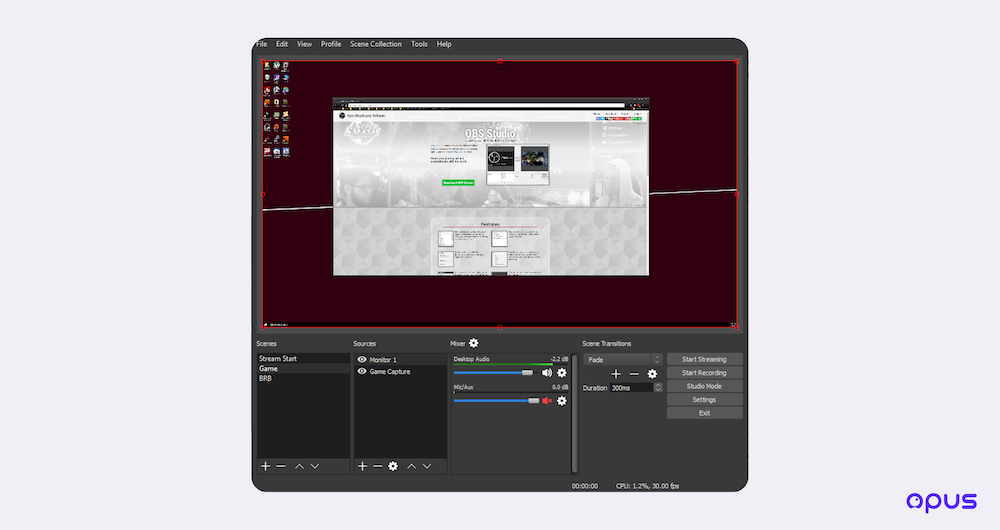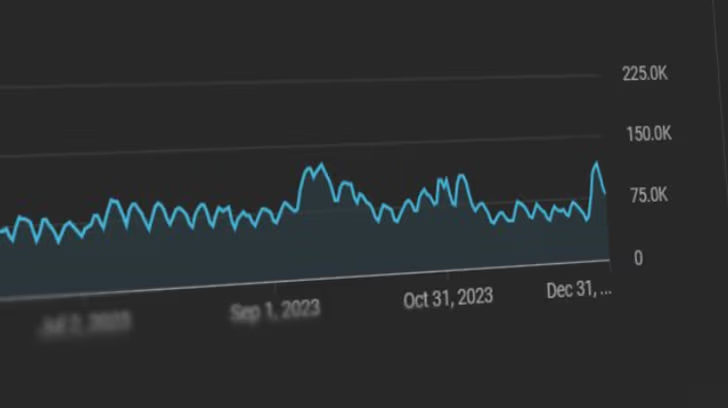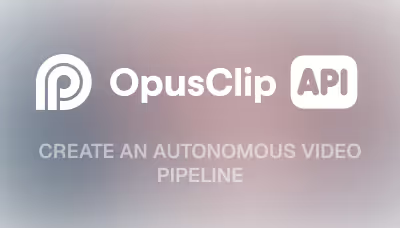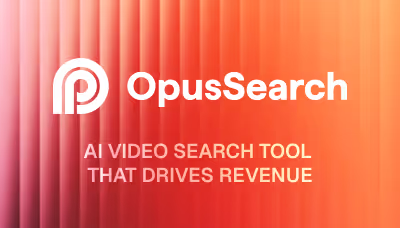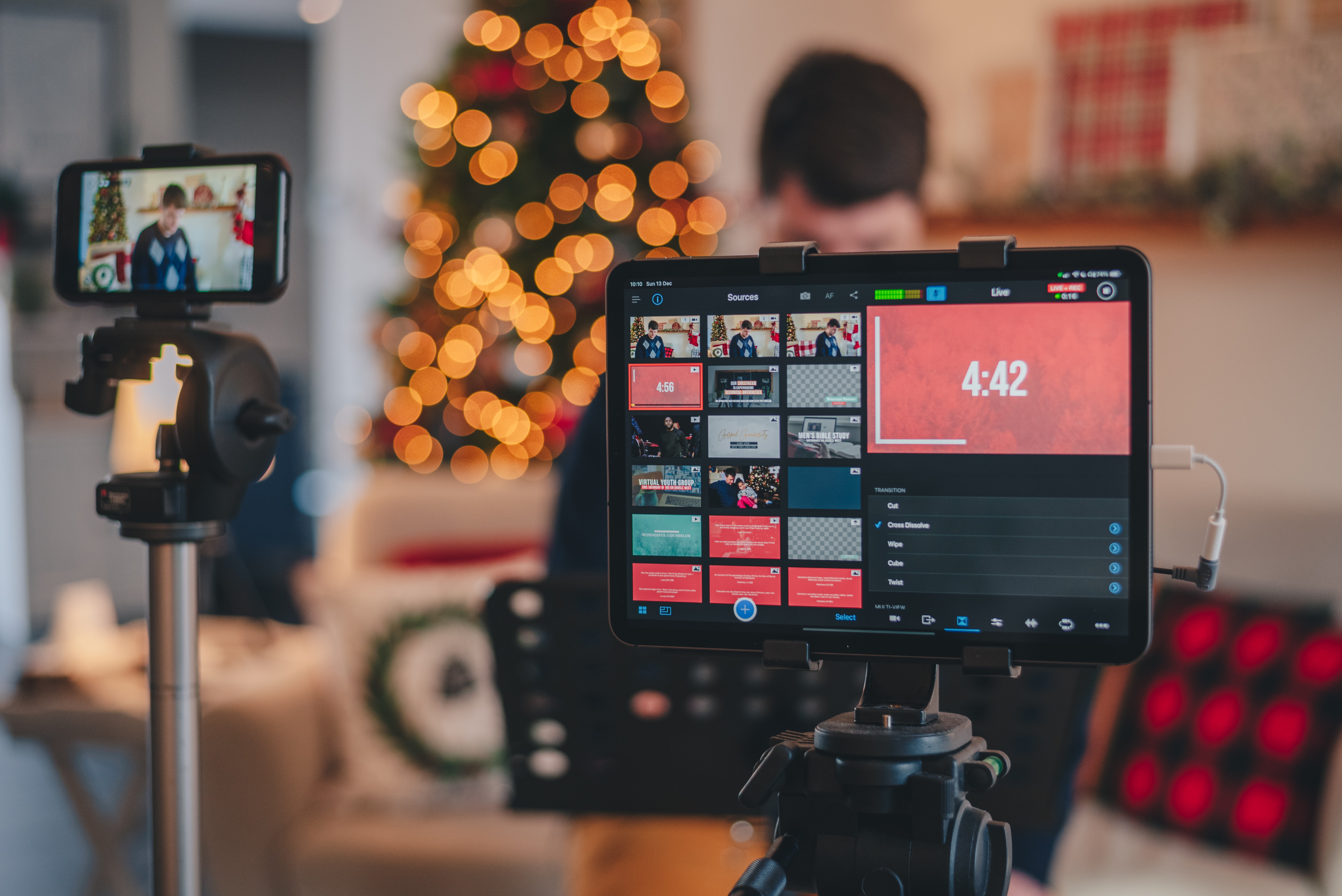Simulcasting Meaning: How to Do it and Maximize Your Livestream Reach

Live Streaming is undoubtedly a great way for any creator to engage their community and grow their business. But many creators are struggling to gain more exposure and increase their reach.and is a must-have for anyone starting to livestream in 2023.
With simulcasting, meaning the practice of broadcasting your live content on multiple platforms at the same time, you can easily reach larger audiences and build your brand. But simulcasting can seem daunting for creators for a number of reasons.
In this blog post, we are going to talk about what simulcasting is, and how you can leverage simulcasting to maximize your reach. We will cover the best FREE live streaming tools, platforms you should simulcast to, and best practices for simulcasting. Let's get started!
What is simulcasting?
Simulcasting meaning can differ depending on who you ask. But as a combination of the words simultaneous and broadcast, most creators and industry leaders describe it as the process of broadcasting a live video to multiple destinations at the same time. You may use it interchangeably with "multistreaming".
With simulcasting, you create a single live content and stream to many destinations at once, such as YouTube, Facebook, TikTok, LinkedIn, Twitter, your own website, and other platforms. While the destinations you can stream to depend on the tool you use (we will cover the best FREE simulcasting tools in just a bit), in general simulcasting means you can achieve the maximum exposure with the least work. These benefits, combined with the availability of simulcasting through tools like Opus, make it a must-have for anyone looking to start livestreaming in 2023.

How does simulcasting work?
As you will see, simulcasting meanings have evolved drastically over time. The concept of simulcasting originated from the television and radio industry. To simulcast, you needed to first capture the video and audio signal, encode them into specific format (for example H.264 or HEVC for video, and MP2 or AAC for audio), add any necessary metadata (program information, closed captions, et cetera), broadcast the program on its primary channel, transmit a copy of the program to one or more secondary channels or frequencies, and synchronize them with the primary broadcast so that they all started and ended at the same time. Pretty complicated!
Thankfully, in the internet age, simulcasting's meaning has changed for the better. With the advent of online live streaming destinations like YouTube, Facebook, and TikTok, people have more platforms to simulcast to. However, destinations like YouTube and Facebook do not natively allow you to send your stream directly to other platforms, as they want you to stream to their platform exclusively. If you want to, say, stream a live Facebook video to YouTube, you need to use an encoder, which is error-prone and bandwidth-draining.
Luckily, there are already some live streaming tools that have simplified and democratized the whole simulcasting process. A live streaming software like Opus makes it easy for creators like you to simulcast to multiple destinations in just a few clicks.
The benefits of simulcasting
Now that you understand simulcasting's meaning, let's go over the benefits.
- Expand your reach
Simulcasting is the ideal way to reach audiences around the world. Many simulcasting services make it simple for you to connect with new viewers from various platforms, and garner more viewership.
- Meet your audience where you are
"Know your audience" is a tenet of Live Streaming 101, and that includes knowing what platforms your audience watches live shows. Simulcasting live to various platforms makes it super easy for you to connect to all your fans on different platforms at once. It reduces the friction and switching costs your audience needs to take to go to a new platform and makes it easy for them to enjoy a great show on their preferred platforms. Whether it's YouTube, Facebook, LinkedIn, Twitter, Twitch, TikTok, or elsewhere, your viewers are more likely to tune in if you stream your live shows directly to them.
- Diversify your income
Monetization is all about scalability - doing the least amount of work to reap the most amount of benefits. And for live streaming, simulcasting is one of the surest ways for you to 10x your income. Different platforms have different ways of monetization, including sponsorship, advertising, tipping, subscriptions, etc. When you multistream to different platforms, you not only utilize a plethora of monetization methods, it's also great for your brand exposure, which in turn may bring more collaboration opportunities for you.
Another benefit is that simulcasting means you are able to see which platform brings you the most monetization opportunity, so that you can focus more on that platform and work smart, not just hard.
- Take advantage of each platform
Different platforms have different features, demographics, and advantages. For instance, on YouTube you may get a lots of tips from super chat; while on LinkedIn it's better to build your own business; and on TikTok you can reach out to younger audiences. When you stream to different platforms, you leverage their advantages to help you grow faster.
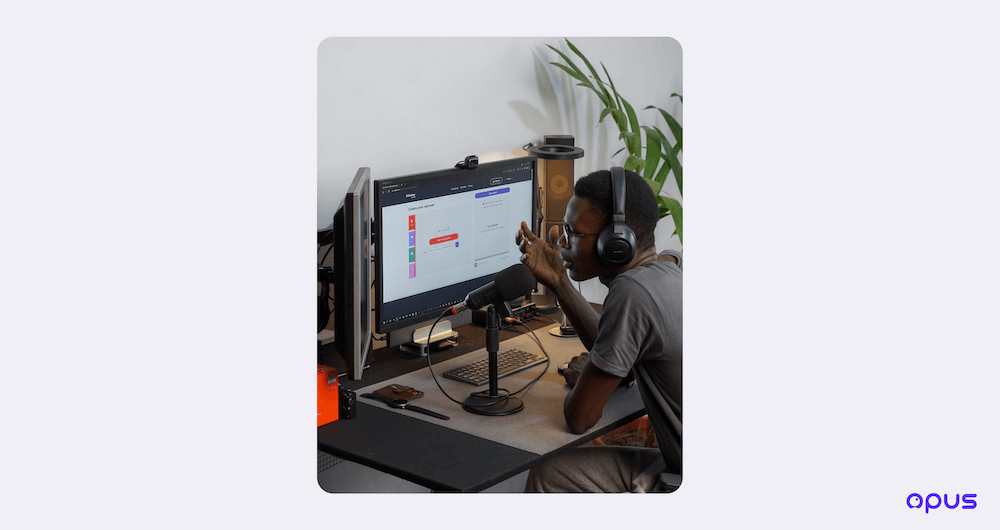
- Gain efficiency with less time and effort
Simulcasting means you can "work smart, not just work hard." With simulcasting, you avoid streaming the same content multiple times on different platforms. You can use the time saved from this process to repurpose your live streams to other forms of content, like blogs, podcasts, and short videos, and upload them to more platforms to gain more exposure.
- Everyone is doing it!
Forgive me for playing the FOMO card. But the fact that every creator who is serious about leveraging live streaming is simulcasting is a tale-tell sign that simulcasting brings a lot of benefits. Don't miss out!
- Capture precise insights into your audience
Simulcasting means that you can easily understand your audiences' appetites on different platforms. Content that is loved by audiences on one platform might not perform well on another. When you simulcast to different social media platforms, you will gain a better picture of what your audiences like. For instance, you might find that your LinkedIn audiences like Q&A sessions better, while on YouTube, live commentary has more engagement. Such valuable insights can help you better adjust your content strategies for each platform, and make your show perform better.
The best FREE software to start simulcasting
Choosing the right tools to simulcast with can help you achieve more with less work.
For hardware tools, you will need proper microphones, lighting, and especially cameras. You can have a look at our ultimate guide for Best Cameras for Live Streaming to level up your live streaming.
As for software, here are the best FREE simulcasting tools to maximize your reach:
1. Opus
Opus is a web-based simulcasting software that is both powerful and easy to use. With just a few clicks, you can multistream to many platforms, including but not limited to YouTube, Facebook, LinkedIn, Twitter, Twitch, TikTok, and Instagram.
Using Opus to simulcast has many benefits, including:
- Simulcast your live shows to unlimited platforms at once directly from your browser
- Read all your audiences' comments from each platform directly inside the studio, and bring comments onscreen to engage your audiences
- Engage with your audiences like never before with our innovative AI-powered audience engagement tools like Magic Polls, Magic Memes, Emoji Rain, and Video Comments
- Customize your show and make it more on-brand, with all kinds of overlays that you can resize and reposition however you like
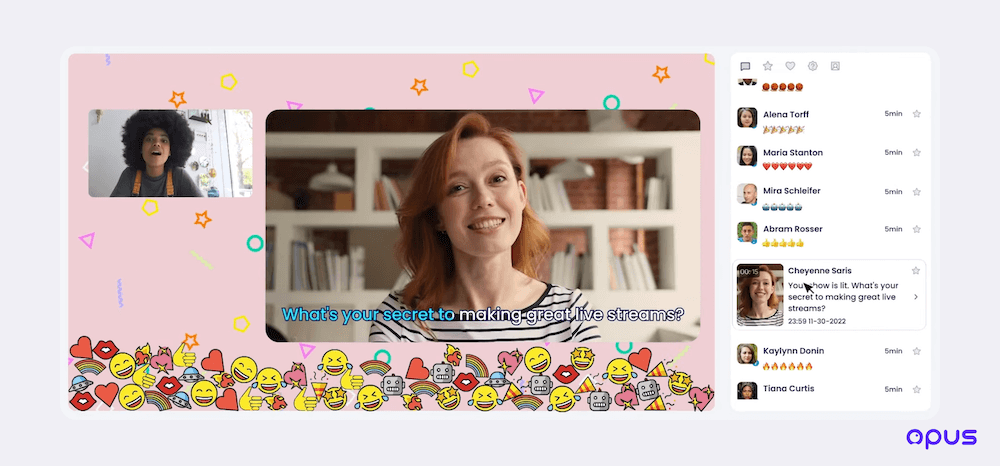
2. OBS
OBS is a free and open-source live streaming software that you can use to multistream to Twitch, YouTube, and other platforms. It's easy to install, has powerful features for you to design a high-quality studio, and can be integrated with a lot of custom plugins.
However, OBS is not easy to use, and the steep learning curve makes what should've been an enjoyable process very frustrating and cumbersome. If you need to use OBS, you can consider integrating OBS with Opus. The process is super easy, and you can enjoy the best of both worlds - the powerfulness of OBS, and ease of use of Opus.
